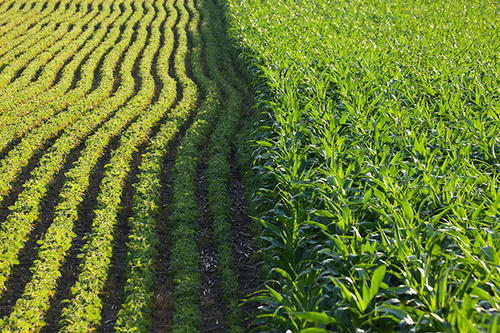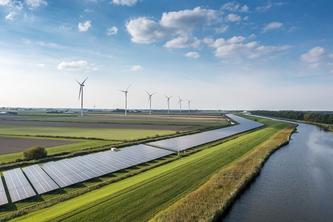
Warmer air temperatures and unpredictable precipitation in the coming decades could dramatically reduce the amount of grain produced in Iowa’s cornfields – and potentially across all corn-growing regions around the world -- a new University of Minnesota-led study shows.
The study, published this week in the journal PLOS ONE, examined Iowa corn production as a microcosm of how corn yields could be affected worldwide by climate change; using a small state-sized sample allowed the authors to account for regional variables that could affect the accuracy of their predictions. The authors chose Iowa because of its location and size, and its role as a major U.S. corn producer.
While researchers previously knew that warmer temperatures reduce yield – the amount of grain a corn plant produces – this study is the first to show how dramatic the effects of warmer air and frequent cycles of drought followed by heavy rain will be on the world’s most important food crop.
Using updated data and computer models that forecast a variety of scenarios, the researchers found that corn yields likely will fall between 15 percent and 50 percent by the middle to the end of this century. The drop will occur at the same time as the global population is growing to about 9 billion, leading to an increase of as much as 60 percent in global food needs.
Other studies have already observed declining corn yields around the globe, but Iowa, and the U.S. Corn Belt in general, has shown sustained high yields because of its ideal soils and climate, said Tracy Twine, an associate professor in the soil, water and climate department at the university and the paper’s lead author.
“The results suggest that Iowa might have reached a peak in corn yields that will decline as temperatures increase unless more heat-tolerant breeds are planted. Modeling studies such as ours really highlight the need for more empirical studies of exactly how corn responds to extreme temperatures and drought. Corn is already amazingly resilient but will need to become even more so to feed our growing population under more extreme weather conditions.”
While past studies have shown similar results in measuring the impact on crop yields of higher air temperatures and erratic precipitation, this project is the first to take into account the complex process by which plants interact with soil moisture.
In one simulation, the researchers projected what would happen to corn yields if cornfields were irrigated to ensure a consistent water supply (few cornfields are actually irrigated in Iowa). Consistent moisture did reduce the effects of warmer air on corn yields, but, the authors note, “on the one hand, it is encouraging that yield declines might be halved solely through one climate adaptation: irrigation. On the other hand, this means that even if Iowa corn were to receive all the water it could use, our model simulations still predict a yield decline of 10 percent to 20 percent from present-day yields.”
The research was funded in part by the U.S. Department of Energy and the U.S. Department of Agriculture. A researcher from the International Center for Tropical Agriculture in Kenya collaborated with U of M researchers on the study.
- Categories:
- Agriculture and Environment





